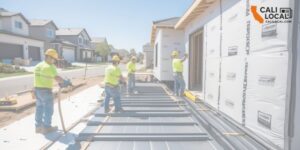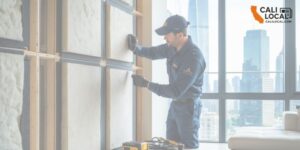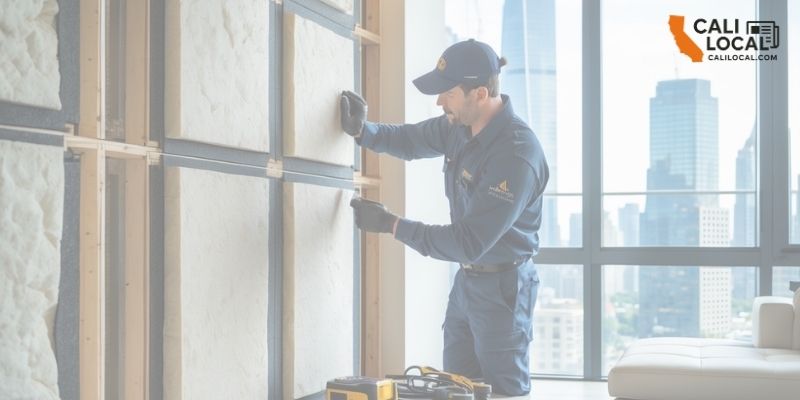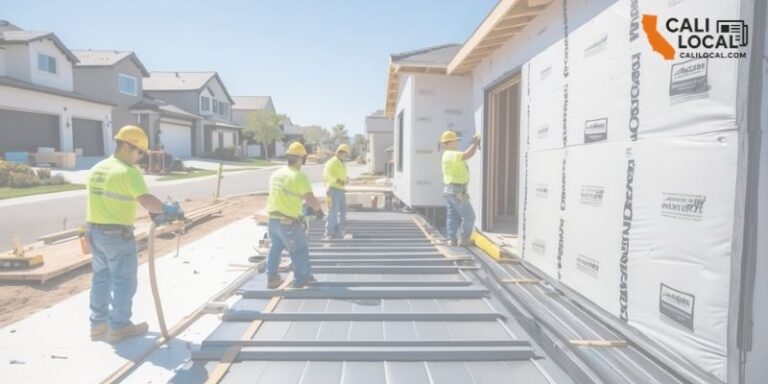Armour Hawthorne Insulation has introduced new soundproofing solutions designed specifically for the challenges of urban living. Their advanced insulation methods focus on reducing noise from busy streets and neighboring units, helping create quieter, more comfortable indoor spaces.
The key to their approach is using high-quality materials that absorb and block sound effectively, making homes and businesses in noisy areas much more peaceful. This helps improve energy efficiency while also cutting down on unwanted noise, a common problem in cities.
By combining expert installation with innovative products, Armour Hawthorne Insulation offers practical options for those looking to reduce noise without major renovations. Their solutions bring measurable improvements in indoor quietness, which is essential for urban environments.
Armour Hawthorne Insulation’s Advanced Soundproofing Solutions

Armour Hawthorne Insulation uses specific materials and methods designed to cut down urban noise. Their solutions focus on stopping noise from outside and between rooms. This helps homeowners in busy areas improve privacy and comfort in their homes.
Innovative Materials for Urban Noise Reduction
Armour Hawthorne Insulation employs spray foam insulation, including both open cell and closed cell types. These materials fill wall cavities completely, creating airtight seals that reduce sound transmission. Closed cell foam, in particular, offers higher density to block more noise from busy streets or noisy neighbors.
The insulation’s ability to expand and fill gaps means it also limits sound leaks that usual materials may miss. This is key for urban living where external noise pollution like traffic and construction is constant. Armour focuses on using materials that last, ensuring soundproofing works over many years without losing effectiveness.
How Armour Hawthorne Insulation Minimizes Noise Transmission
The company’s approach combines soundproofing with their energy-efficient insulation. Their installations seal both air and sound gaps in walls, floors, and ceilings. This decreases the travel of sound vibrations through the building’s structure.
Armour uses layers of foam to absorb sound waves and block airborne noise. The materials also reduce vibrations that carry noise through solid building parts. By doing this, they help limit both loud external noise and sound from inside the home that might disturb others.
Privacy and Comfort Enhancements for City Dwellers
Armour Hawthorne Insulation’s soundproofing improves privacy by reducing noise from neighbors or shared walls. This is especially useful in apartments or townhomes where close living quarters can cause constant noise issues.
The quieter indoor space enhances overall comfort, allowing residents to enjoy peace despite busy, noisy neighborhoods. Improved sound insulation also supports better sleep and concentration by cutting down on unwanted sounds. This helps urban dwellers create a more restful and private home environment.
Types of Soundproofing Materials and Their Performance

Effective soundproofing relies on materials that either block or absorb sound waves. Different products vary in how well they reduce noise, their ease of installation, and additional benefits like energy efficiency. Understanding the options helps select the right materials for urban living spaces.
Fiberglass, Mineral Wool, and Rockwool Options
Fiberglass and mineral wool are common insulation materials known for sound absorption and thermal benefits. Fiberglass insulation, often in batt form, is affordable and easy to install. It reduces airborne noise by trapping sound waves within its fibers.
Mineral wool, including rockwool, offers higher density than fiberglass, which improves sound damping. Acoustic mineral wool insulation not only blocks noise but also resists fire and moisture better than fiberglass. It has a higher STC (Sound Transmission Class) rating, making it ideal for urban homes facing external noise.
Both types can be used as batt or blown-in insulation. While fiberglass is more widely available, mineral wool’s fire resistance and sound control make it a top choice when performance matters.
Acoustic Panels, Foam, and Mass-Loaded Vinyl
Acoustic panels and foam are designed to absorb sound inside rooms, reducing echoes and reverberation. Acoustic foam panels and closed-cell foam work well for controlling mid to high frequencies. Owens Corning 703 is a well-known fiberglass acoustic panel used in studios and living spaces for clear sound quality.
Mass-loaded vinyl (MLV) acts as a thin, flexible sound barrier. It’s dense and blocks sound transmission effectively, especially low frequencies. MLV can be installed in walls, ceilings, or floors and is often layered with insulation materials for better results.
While foam and panels improve indoor sound comfort by absorbing echoes, MLV adds a heavy barrier to block noise between rooms or from outside.
Soundproof Drywall and Resilient Channels
Soundproof drywall is a denser, thicker type of gypsum board designed to reduce noise transfer through walls. It often has layers of gypsum, sound-damping polymers, or metal cores. Compared to standard drywall, it improves STC ratings significantly.
Resilient channels are metal strips installed between drywall and wall studs to create a gap. This space isolates vibrations and reduces sound transfer through structures. When paired with soundproof drywall, resilient channels enhance overall performance.
These products are most effective when combined with insulation inside walls. They require some remodeling but deliver strong results in reducing urban noise from neighboring units.
Energy Efficiency and Moisture Resistance Considerations
Soundproofing materials can also impact a home’s energy efficiency. Fiberglass and mineral wool insulation help regulate indoor temperature by preventing heat loss, reducing energy costs.
Moisture resistance is important in damp climates or where humidity affects walls. Mineral wool and certain spray foam insulations resist moisture better than fiberglass, reducing mold risks. Closed-cell spray foam insulation seals gaps and adds both thermal and soundproofing benefits but tends to cost more.
Choosing materials with strong moisture resistance prevents damage and maintains soundproofing performance over time. Energy-efficient materials offer dual benefits in noise control and home comfort for urban residents.
- Armour Hawthorne Insulation
- 3355 W El Segundo Blvd, Hawthorne, CA 90250, United States
- +14244874483
- armourhawthorneinsulation.com
Frequently Asked Questions
Armour Hawthorne’s soundproofing solutions improve noise control, energy efficiency, and indoor comfort. Their insulation fits both new and existing buildings, with installation times and costs that vary based on project size. They also focus on using environmentally friendly materials.
What are the main benefits of using Armour Hawthorne’s soundproofing solutions in urban environments?
The solutions reduce unwanted noise from busy streets or neighbors. They improve indoor quietness and help lower energy bills by enhancing insulation. This creates a more comfortable and energy-efficient living space.
How does Armour Hawthorne’s insulation technology differ from traditional soundproofing methods?
Their technology uses advanced materials that both block and absorb sound waves more effectively. Unlike older methods that mainly focus on one function, their products combine sound blocking and energy efficiency.
Can Armour Hawthorne insulation be installed in existing buildings, or is it only for new constructions?
It can be installed in both existing homes and new buildings. The team assesses each space to choose the best fit without needing major remodeling in most cases.
What are the estimated costs associated with installing Armour Hawthorne’s soundproofing insulation?
Costs depend on the size, material types, and installation complexity. Typically, customers can expect a range suited for residential and commercial budgets, but a detailed quote is needed for exact pricing.
How does Armour Hawthorne ensure the environmental sustainability of their soundproofing materials?
They select materials that have low environmental impact and often include recycled content. The company aims to reduce waste and choose products that support energy savings in buildings.
What is the average installation time for Armour Hawthorne’s soundproofing solutions?
Installation usually takes a few hours to a few days. The timeline depends on the project size and whether it involves walls, ceilings, or floors.








